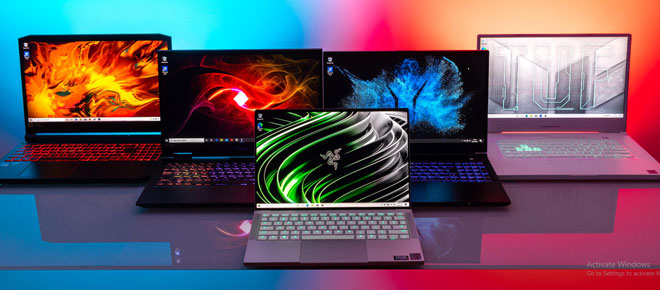Exploring the Future of Gaming With VR Headsets

Immerse yourself in virtual worlds and experience thrilling adventures like never before with VR headsets. With continued innovations in display and gaming hardware, VR games can offer high-quality graphics with minimal eye strain or motion sickness.
In addition to immersive virtual environments, VR also offers innovative gameplay mechanics that push the boundaries of gaming. These include haptic feedback and positional tracking that allows players to use their bodies to control game environments.
Foveated Rendering
Gaming has always been a popular pastime that transports players into imaginary worlds, immersing them in exciting adventures and captivating storylines. However, virtual reality (VR) technology takes the experience to a new level. VR headsets and controllers let gamers interact with digital characters, immerse themselves in realistic three-dimensional environments, and feel the effects of their actions through haptic feedback and motion tracking.
To achieve this, headsets need to offer high-resolution displays and powerful processors. Moreover, they need to be comfortable and lightweight so that users can wear them for long periods without feeling any discomfort or fatigue. Finally, they need to provide motion-tracking sensors and handheld controllers so that gamers can physically interact with their game environment.
Foveated rendering is a technique that can improve VR experiences by blurring the peripheral parts of a scene while keeping the central region sharp and in focus. It also helps reduce the graphical demands of VR headsets by eliminating the need to render everything at the same resolution, which would be impossible on current systems with their limited processing power. Foveated rendering is possible thanks to eye-tracking technology – another feature that is expected to be included in Sony’s upcoming headset – which tracks where the user is looking.
Different foveated rendering methods vary in how they take advantage of reduced visual acuity in the peripheral part of the human visual system. Some use a single reference full-resolution image that is presented for a short period to determine when the quality starts to degrade. Others use slider methods in which the participant is given a range of full-resolution images with gradual decreases in quality and is asked to identify when the quality degrades below a certain threshold.
Nvidia has developed a variation of foveated rendering called Variable Rate Super Sampling (VRSS) that utilizes gaze-tracked foveation to display higher image quality in the area that is in focus. This is a significant advancement over the fixed-foveated rendering used by previous VR headsets such as the HTC Vive and Oculus Rift. In addition, VRSS can track the location of a user’s gaze and dynamically adjust the image quality in the foveated region to match. Explore cutting-edge technologies like VRSS and more at Nvidia with the added benefit of AT&T Coupon Codes for exclusive savings on your tech purchases.
AR and Mixed Reality
Gaming has long been a popular pastime, captivating players with immersive and interactive experiences. Virtual Reality (VR) has taken this experience to a whole new level, blurring the lines between the real world and the digital world. VR headsets such as Oculus Rift, HTC Vive, and PlayStation VR transport players into fictional environments, letting them explore, interact with, and play games like never before.
The VR industry has seen significant advancements over the past few years, resulting in better graphics and more realistic gameplay. The latest VR headsets are also more comfortable, and a range of peripherals are available to enhance the experience, such as motion tracking systems and haptic feedback.
Moreover, the popularity of VR gaming has prompted major technology companies to invest in developing and manufacturing the hardware required for this experience. As a result, VR headsets such as the Meta Quest 3 and Apple Vision Pro are becoming more affordable and accessible for various audiences.
As the VR industry continues to grow, developers will also focus on improving the user interface (UI) to make it easier for users to control their game and navigate their virtual environment. This will also help them improve the overall user experience of VR gaming and enable them to develop more exciting and immersive experiences for their audience.
One of the most exciting predictions for the future of VR gaming is that developers will start to integrate social aspects into their games, allowing gamers to connect in virtual spaces. This will be possible through the use of social platforms such as VRChat that allow users to engage in conversations with each other. Additionally, several VR games allow players to connect with other gamers through multiplayer experiences.
The future of VR gaming is looking bright, and with the recent breakthroughs in the field, we can expect to see some incredible developments over the next few years. VR gaming will continue to grow in popularity, transforming the way we play video games and blurring the lines between the real world and fiction.
Haptic Feedback
As VR gaming continues to grow and develop, key technology developments are enabling it to offer an immersive experience that is unlike anything else in the industry. One such advancement is foveated rendering, which focuses on the area of the screen that players are looking at to reduce processing power and improve performance. Another advancement is haptic feedback, which allows gamers to feel the virtual world with their hands and body. This feature is being incorporated into games to create more realistic, life-like experiences and help gamers connect with the game environments more intuitively.
Haptic feedback enables users to feel the textures of objects and surfaces in the virtual world. It works by delivering vibrations to the player’s controller or other devices connected to the headset. It is similar to the rumble that occurs when you press down on a button on your Xbox controller, but it is much more sophisticated and can even recreate a sense of touch. It is a vital part of the gaming experience and can add a new dimension to your gameplay.
Gamers can now engage in multiplayer VR experiences with their friends and fellow players from around the world. This has transformed gaming from a solitary activity into a social activity and has also given rise to the creation of gaming communities. Moreover, the integration of VR with other platforms has further amplified this experience and made it more accessible to a larger user base.
Another important aspect of VR is the ability to expand on gaming genres that were previously impossible or impractical. This includes new racing and sports games, as well as games that provide a more interactive social experience.
However, while these developments are transforming the gaming industry, there are still challenges that must be overcome for VR to become a mainstream gaming platform. For starters, the cost of VR headsets is still high and requires expensive hardware. Additionally, motion sickness and discomfort during long gaming sessions can be a major turn-off for many users. However, these obstacles are not insurmountable and could be addressed with better hardware and software optimization. Explore the evolving landscape of VR gaming and more at AT&T with the added benefit of an Appliances & Electronics Coupon Code for exclusive savings on your tech purchases.
Six Degrees of Freedom
Virtual Reality, commonly abbreviated as VR, is a technology that allows us to step into another world without leaving our living rooms. By wearing a headset and using special controllers, VR gives users the sensation that they are actually in another space. VR is used for immersive experiences such as virtual tourism, gaming, and training and simulation.
As VR becomes more popular, gamers are recognizing the value of this technology and seeking out new experiences. Whether they’re playing an action-packed first-person shooter game or trying to escape a haunted house, gamers are experiencing the full potential of VR and are leaving a lasting impression on consumers.
With advancements in VR headset technology, consumers can experience higher resolutions and a more realistic display. This translates to better gameplay and enhanced immersion for the user. Currently, the most advanced headsets on the market have a resolution of up to 60 pixels per degree and feature a retina-style display. This provides an incredible level of clarity that eliminates the infamous screen door effect and immerses players into a lifelike scenario.
The most important aspect of a VR experience is the degree of movement in the virtual environment. VR headsets with 6 Degrees of Freedom (DoF) allow a person to move around in their virtual environment just like they would in real life. It’s a key difference that separates VR from augmented reality applications, where the user is merely watching a digital overlay of their environment.
To achieve 6 DoF, headsets must be able to track the motion of the head and the hands in the virtual environment and determine what is happening in front, below, and above the user. There are a variety of tracking solutions that enable 6 DoF VR including the use of sensors on the headset, on the controllers, and the floor.
With the increasing popularity of VR, the gaming industry is expected to grow exponentially in the next few years. Several companies are investing in VR development and hardware and creating a variety of immersive gaming experiences that are sure to appeal to consumers of all ages.
Conclusion
The future of gaming with VR headsets is incredibly promising. Technology is advancing rapidly, and developers are constantly finding new ways to create immersive gaming experiences. With VR, gamers can step into a whole new world and interact with it in ways that were never before possible. As more and more people embrace this technology, we can expect to see even more advancements, including better graphics, more realistic physics, and even more immersive gameplay. The future of gaming is truly exciting, and VR is at the forefront of this revolution.











